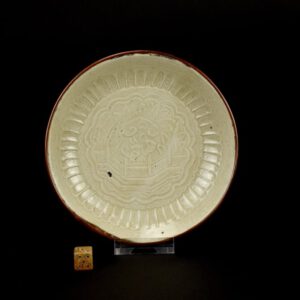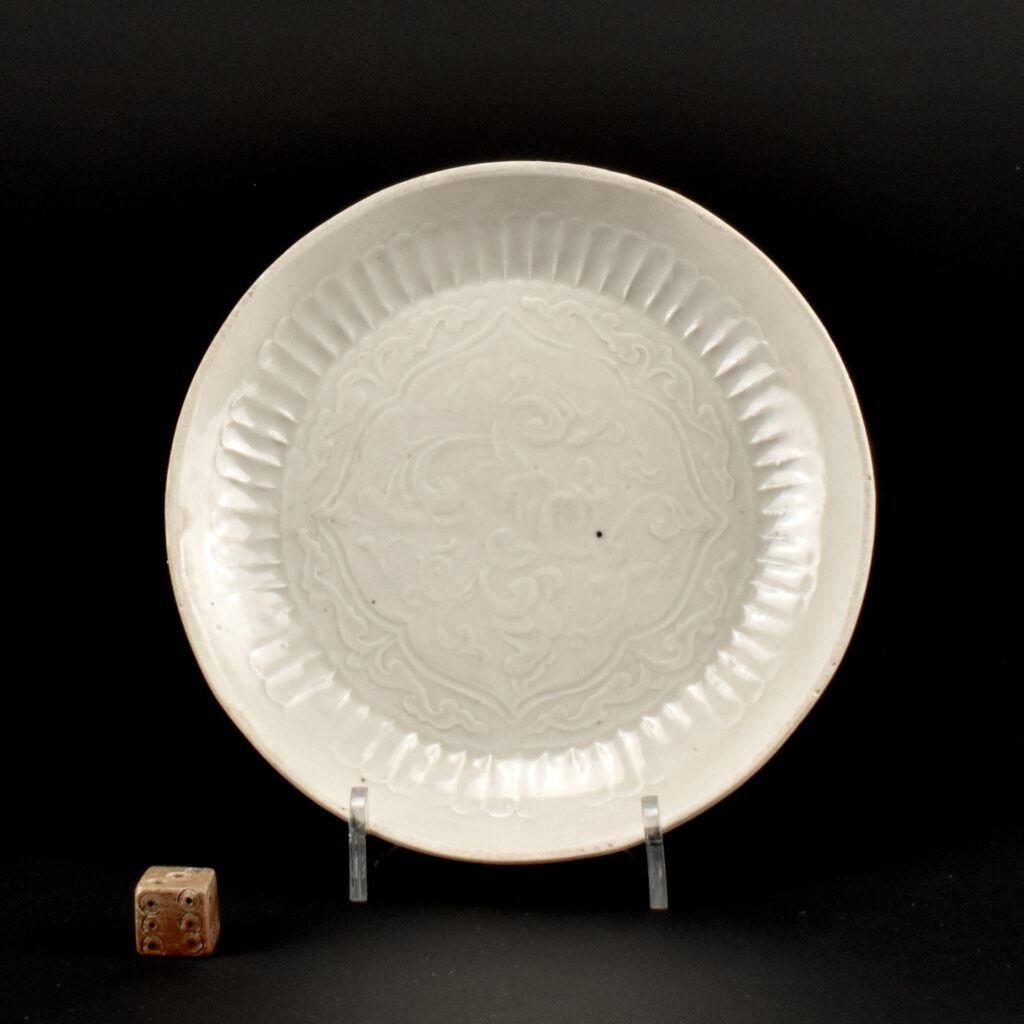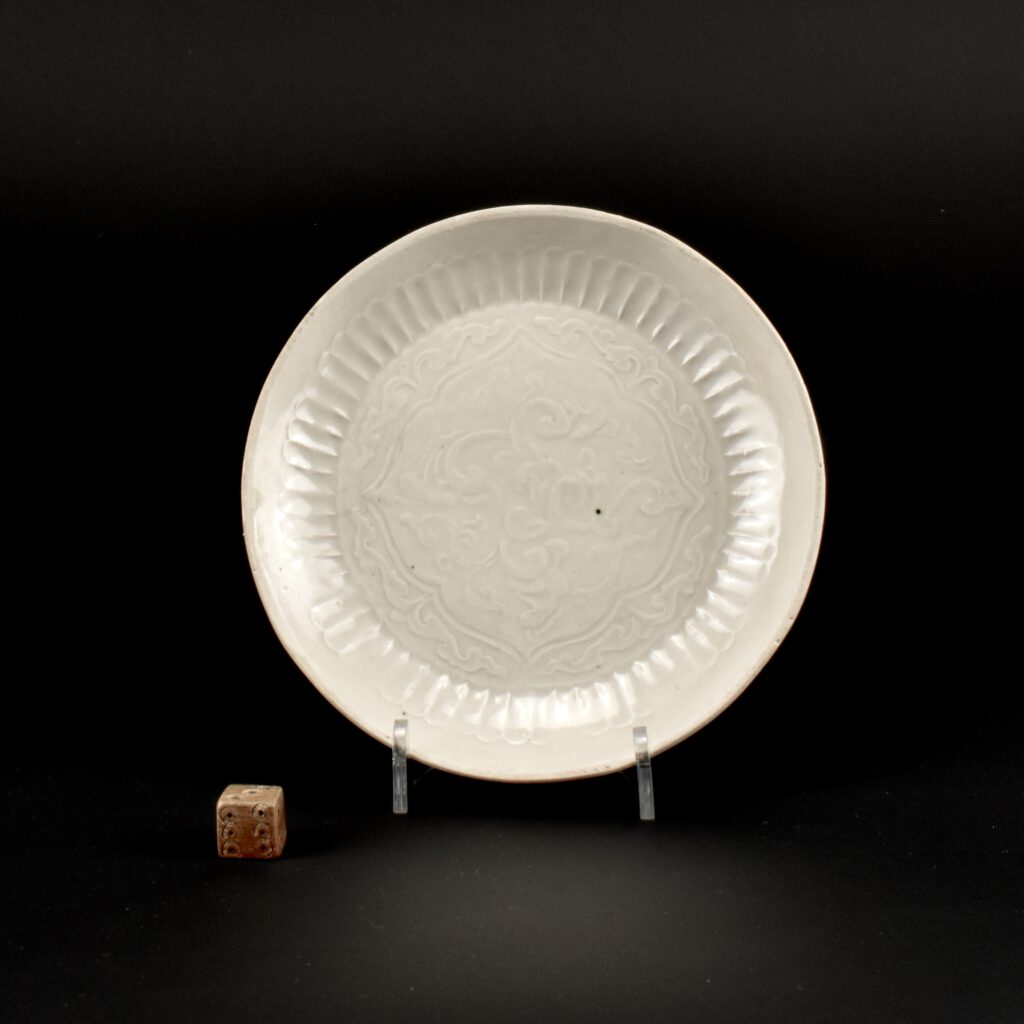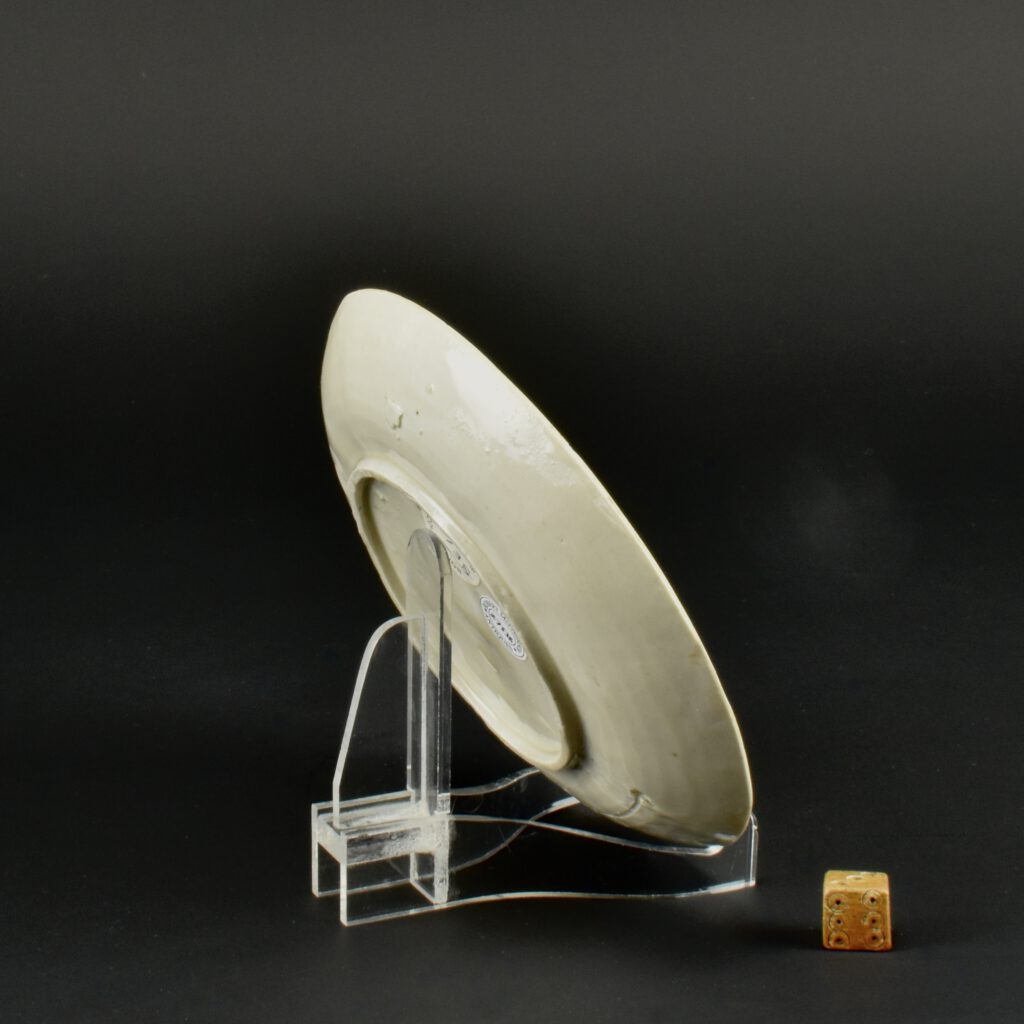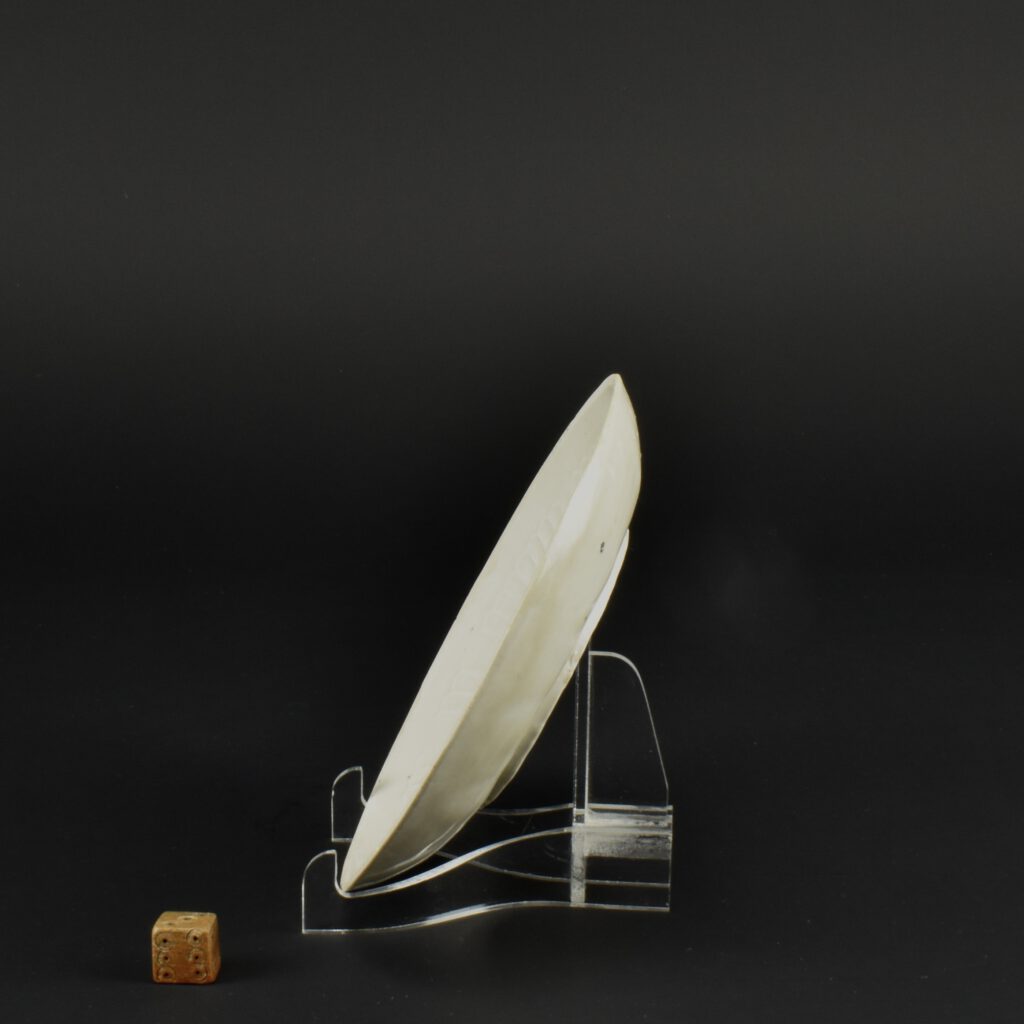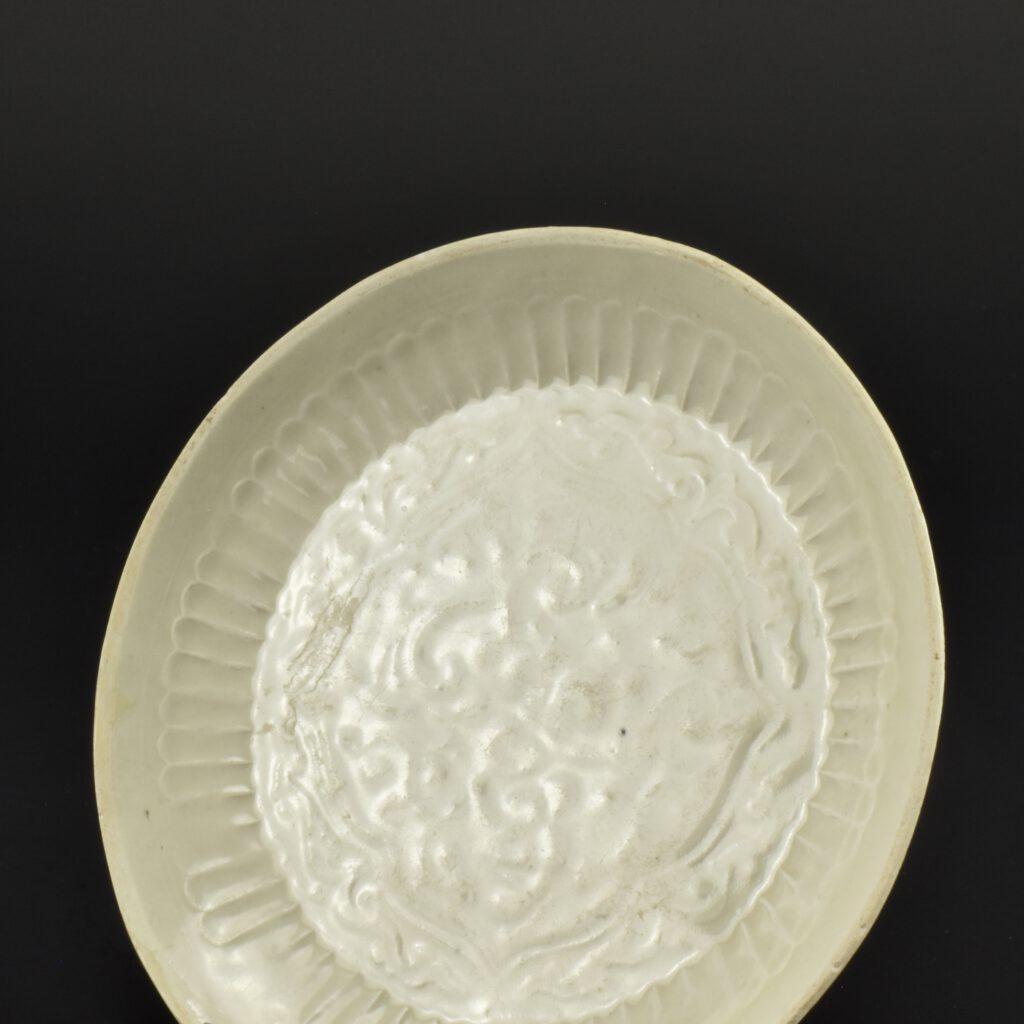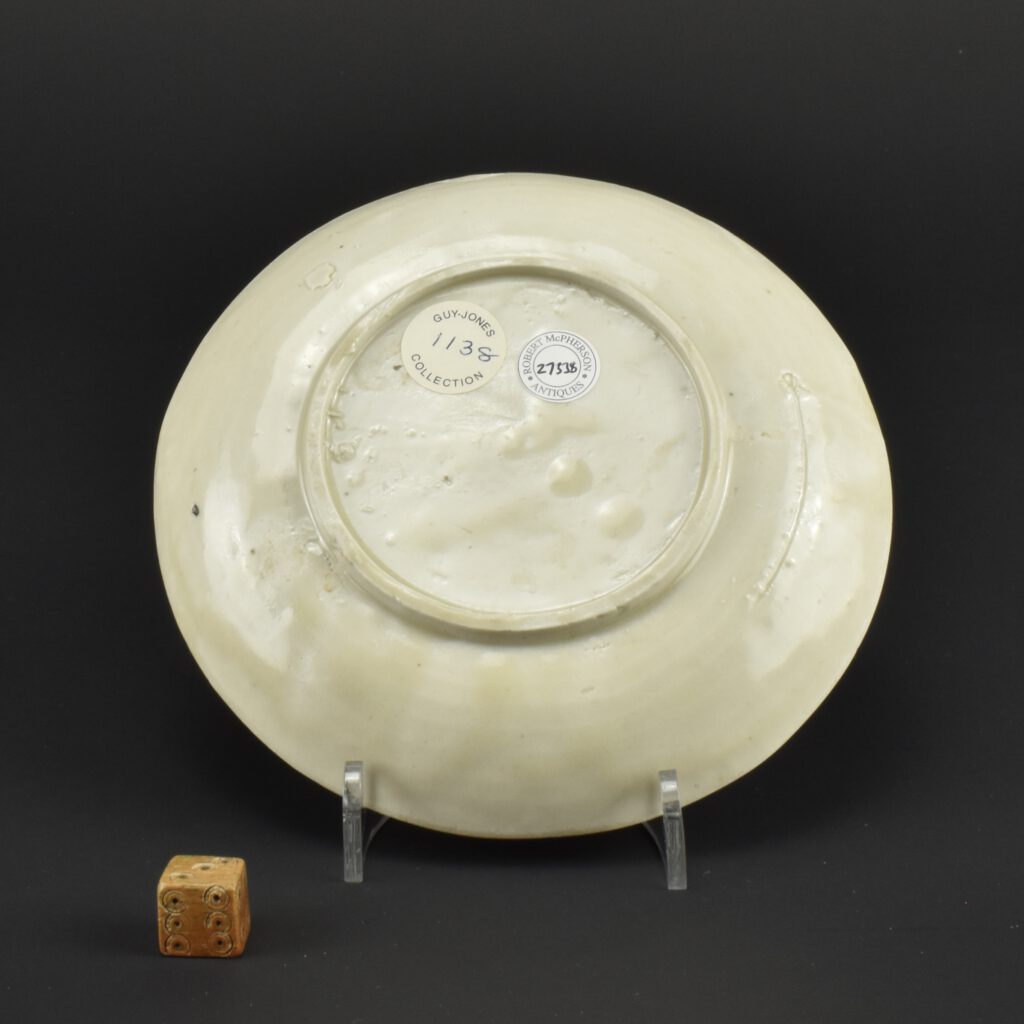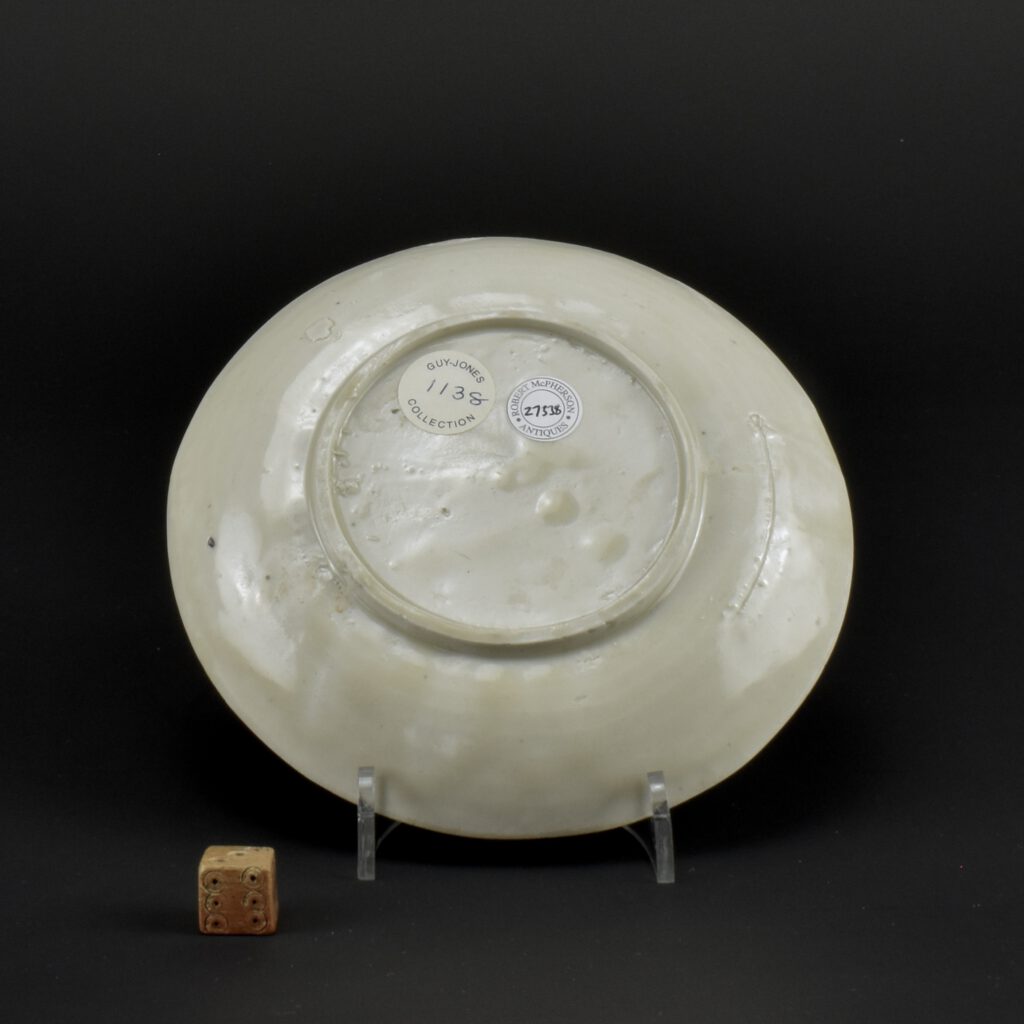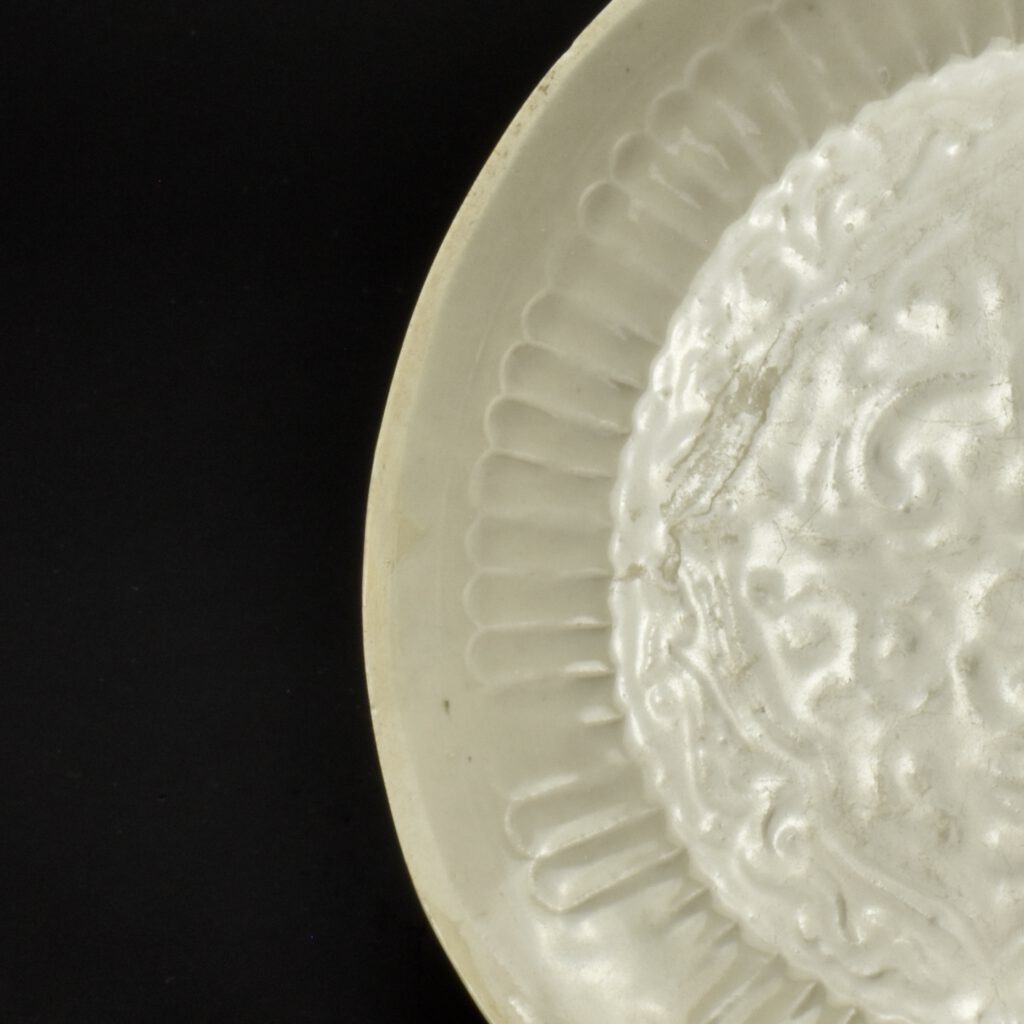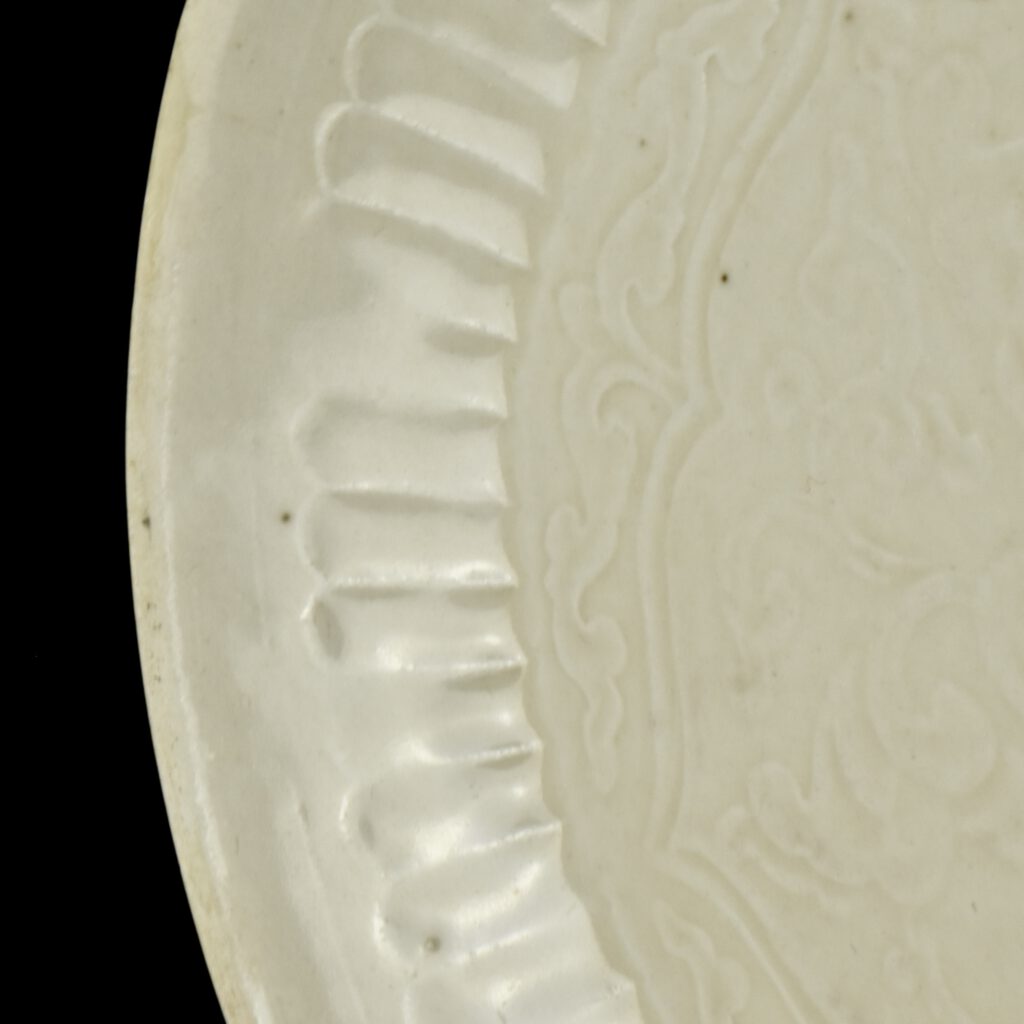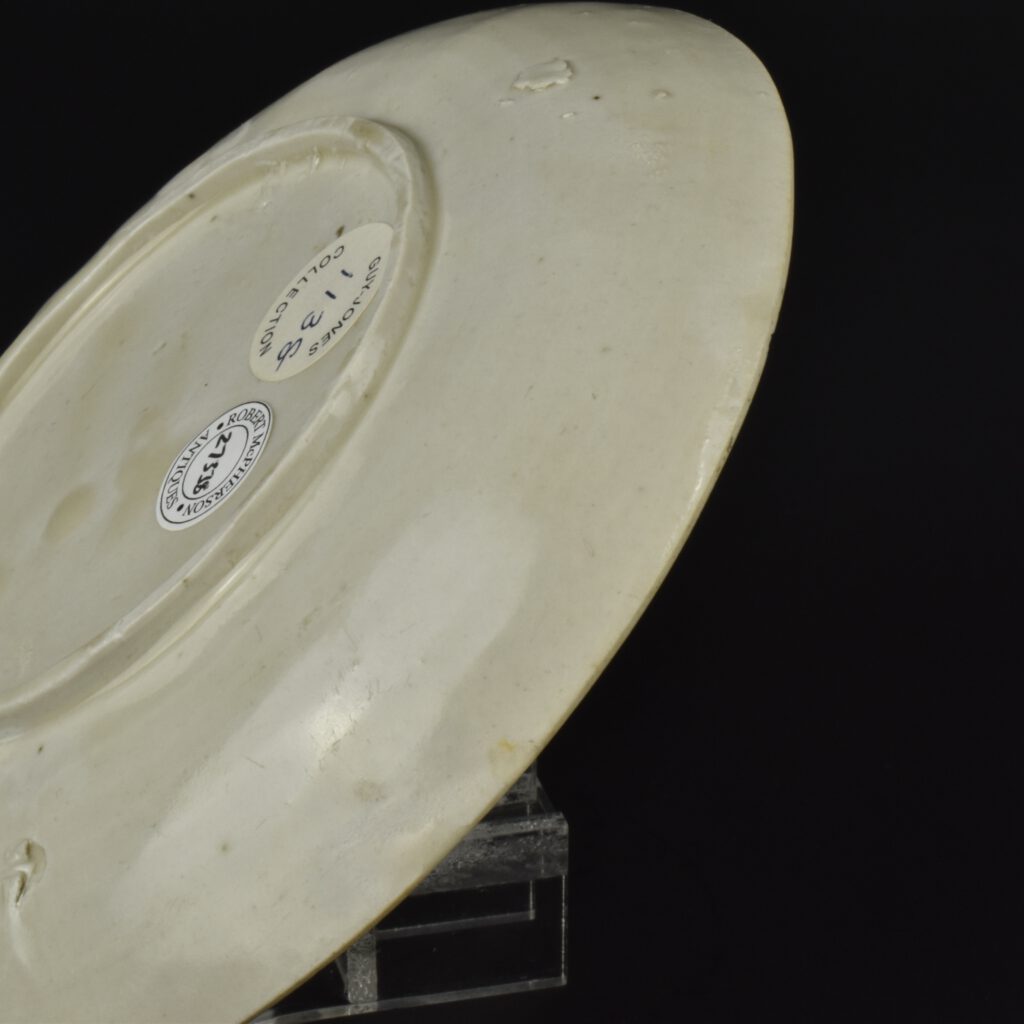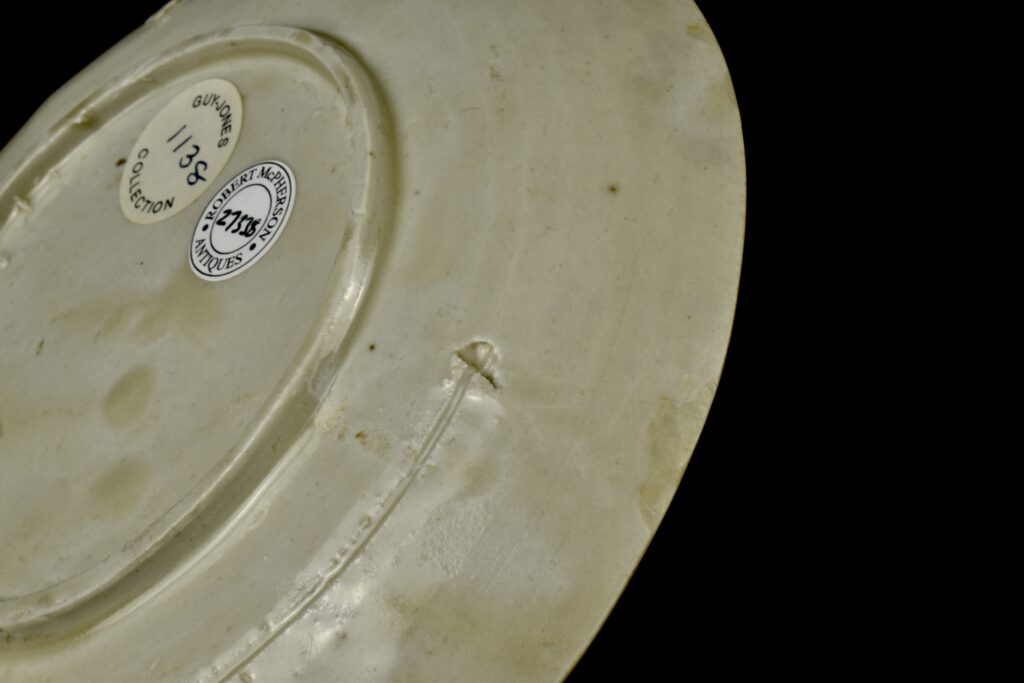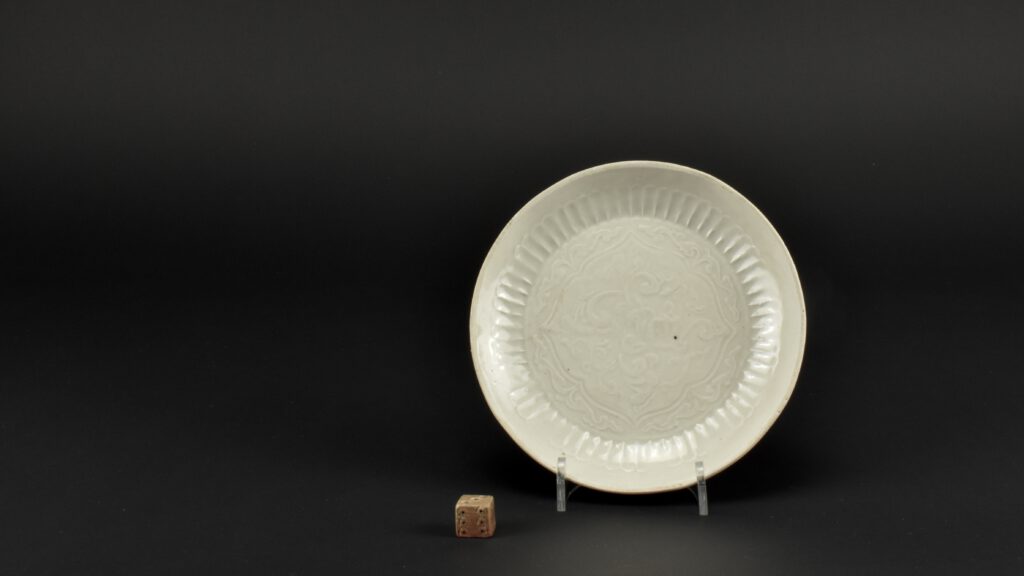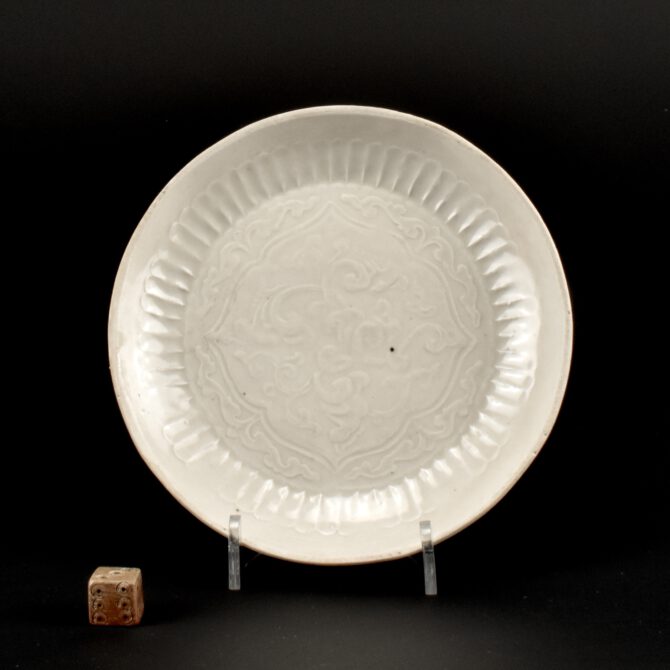
A Small Song or Jin Dynasty Ding Ware Dish
A Ding Ware Dish, Ding Kilns, Hebei Province, Song or Jin c.1050–1234. This Dingyao (Dingware) Pan is moulded and covered with a thin creamy glaze. The scalloped foliate moulded cavetto is decorated with scrolling stylised plants. The dish would have been fired on the rim, as it is the only unglazed part of the dish that has been wiped clean of glaze. The rim has a metal band to protect it as well as to hide the unglazed rough edge. The back is unevenly glazed with a scratch in the clay and a piece of waste clay adhering to curved edge Ding wares come from a region of northern China formerly known as Dingzhou (Ding prefecture); the white porcelains made there have been prized since the Song dynasty (960–1279). Archaeologists have found the main Ding kiln complex on the border of present-day Quyang in Hebei province. Provenance : Robert McPherson Antiques, probably stock number 14663 (bought at Christie’s South Kensington, London, 10th of July 2003). Mr and Mrs Guy-Jones purchased 16th of October 2003 (Guy-Jones label, item number 1138).
See Below For More Photographs and Information.
SOLD
- Condition
- A filled chips to the rim, and a glaze crack to the back, see close-up photographs below.
- Size
- Diameter 13.2 cm (5 1/2 inches)
- Provenance
- Robert McPherson Antiques, probably stock number 14663 (bought at Christie's South Kensington, London, 10th of July 2003). Mr and Mrs Guy-Jones purchased 16th of October 2003 (Guy-Jones label, item number 1138).
- Stock number
- 27338
- References
- A dish from the Percival David Foundation at the British Museum with similar elements is described on the BM website : "Ding ware定窯 Quyang county, Hebei province河北省,曲陽縣 Northern Song or Jin dynasty, about AD 1050–1234". A similar Dingyao dish dated to the 13th century, depicting a scholars' rock is in the Los Angeles County Museum of Art (Gift of Nasli M. Heeramaneck M.73.48.106.).
Information
Ding Ware :
Production of Ding ware began late in the Tang dynasty in Quyang county, Hebei province and was closely associated with Xing ware. During the Five Dynasties (906-960) Ding ware developed into its own distinct style and by the Northern Song dynasty the Ding kilns were producing some of the most successful porcelains in China. Ding ware is characterized by its ivory coloured body, clear honey-brown glaze, copper bound rim, and “tear drops” which run down the outside of its wares.
Decoration of Northern Song Ding ware was typified by elegant hand carved and incised designs with combed detailing; this contrasts with Southern Song Ding ware which tended to display densely moulded motifs. Due to Ding’s popularity many kilns produced their own version of the wares which are termed Ding-type wares; however, these wares differ in refinement of body and craftsmanship to those produced at the Ding kilns.
The most characteristic wares are thin porcelains with a white or greyish body and a nearly transparent white-tinted though they are classed had been described as stoneware by some people in the past. Chemical analysis has shown that they were often made entirely of a Kaolintic clay without any petuntse or "porcelain stone".They are mostly decorated with uncoloured designs that are incised or in very shallow relief.
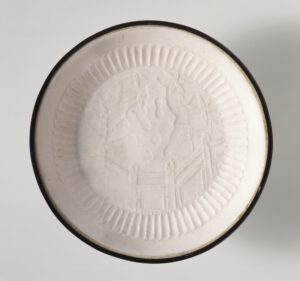
A Song or Jin Ding Ware Dish
Robert McPherson Antiques - Sold Archive 27023.
